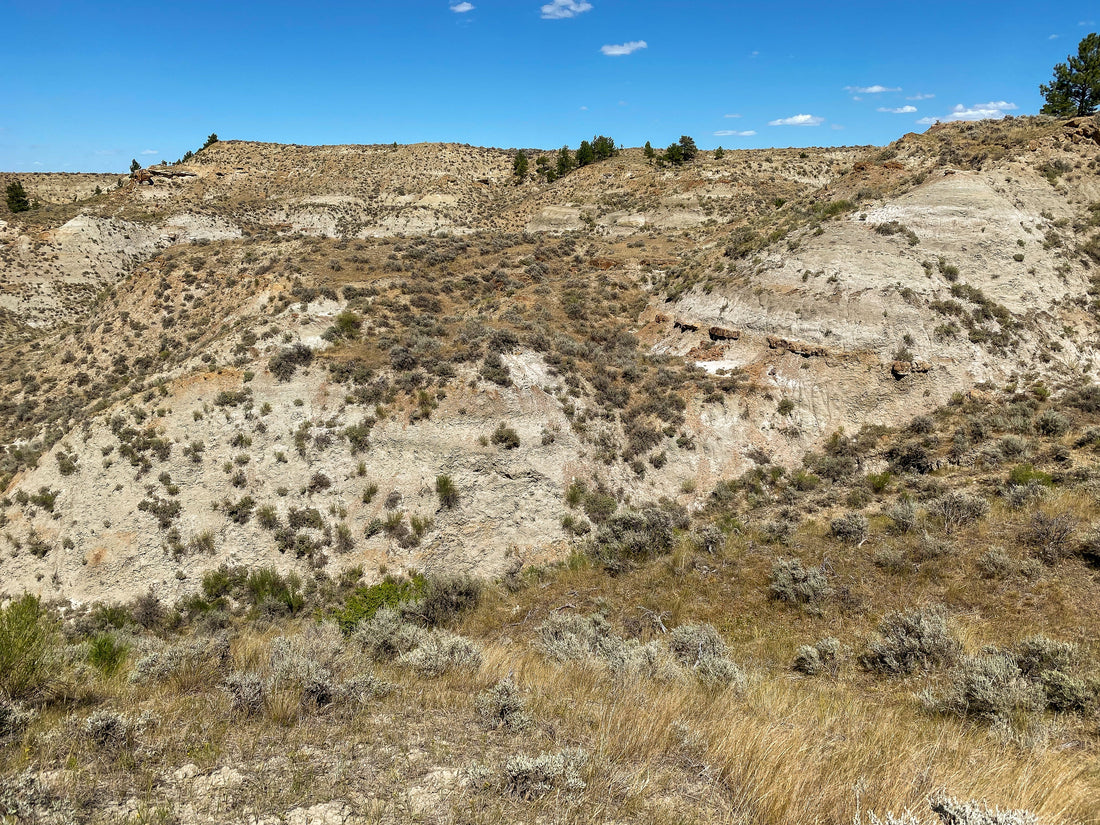
75 million years ago Montana was a swamp and Fossil Crates went on location to check it out!
Share
The Fossil Crates team took a trip 75 million years back in time to what was then swampland in Central Montana. Below is a brief day-by-day account of our adventures looking for Late Cretaceous Judith River Formation fossils.
Day 1
We split into two teams and headed out into the wilds of Montana. Dr. Brian Curtice, on Team One, jumped into the shotgun seat. This normally coveted seating position isn't glamorous in paleo circles as the shotgun rider is on “fence duty” – each time the truck arrives at a barbwire gate, "shotgun" jumps, carefully wrestles the always-stuck barbwire fence gates open, then recloses them tightly once the truck drives through. Dr. BC managed to only find the sharp end of the barbed wire once and considered it a major win.
Two promising locales were identified by the teams before lunch. Team One found a locality with  shell fragments (a large tortoise-like animal similar to the giant Galapagos tortoises) eroding out of a hill.
shell fragments (a large tortoise-like animal similar to the giant Galapagos tortoises) eroding out of a hill.

Team Two, 3 miles away as the crow flies but nearly 45 minutes by vehicle due to the rugged terrain, discovered a limb bone belonging to a duck-bill dinosaur weathering out of the ground. As excited as each team was by the discoveries Day 1 was sadly cut short by massive thunderstorms with huge amounts of lightning punctuated with short bursts of heavy rains. It did make for a great sunset though!

Day 2
Wind. Lots and lots of wind. We aren't sure if it ever dipped below 20mph, it certainly gusted well over 40 for minutes at a time!
"Turtle Team" as Team One was now being called, dug into the hill only to discover their promising turtle find contained only a few more shell fragments. Had we been there a thousand or so years earlier, it might have been a complete turtle as the shell fragments were in great shape. Alas, that is how it goes in fieldwork, 1,000 years too late and a few dollars short. Undaunted, Turtle Team spent the rest of the day scouting up and down steep, treacherous hills, finding bits of bone, and a tyrannosaurid tooth, along the way.
Team Two spent the morning ascertaining how much of the duck-bill dinosaur was in the ground. The conclusion? The bone, likely a femur, continued under a hill that would require major excavation to reach. Such an excavation wasn't attempted as smoke was seen in the sky.
The smoke rapidly increased, from a single white plume to clouds of black and white smoke. The team pivoted from fossils to reaching out to see if we were needed to help stomp out a fire. The fire proved to be far larger than simple shovels could impact so we headed to camp and prepared to evacuate.

Days 3 and 4
The presence of fire kept the team near the camp, the smoke an ominous sign that we needed to be on our guard.

We prospected numerous gullies, looking for bones possibly revealed by the ferocious weather a few nights prior. Days of searching turned up a few bone fragments and some petrified wood, plus a lot of neat local wildlife (ants, bees, beetles, butterflies, birds, pronghorns, and deer).
The most complete skeleton we found was of this juvenile elk. It was fascinating to see no trace of limb elements or a skull, just an articulated vertebral column.

The Judith River Formation is famous for being a tough place to find fossils. The Fossil Crates team can't wait to go back!
BC